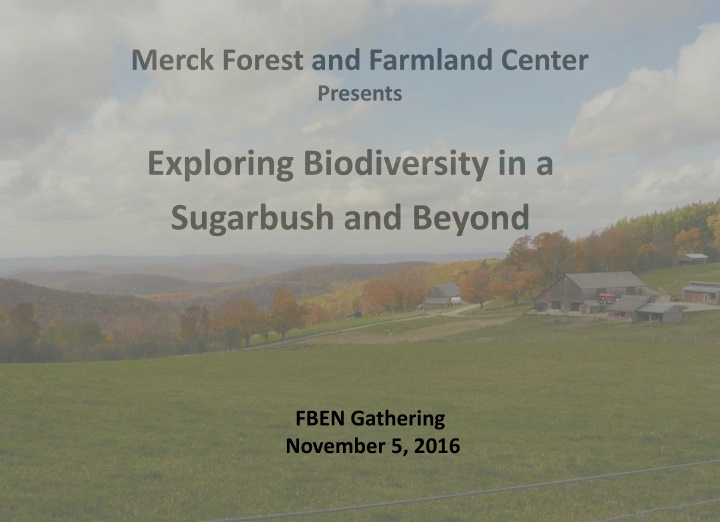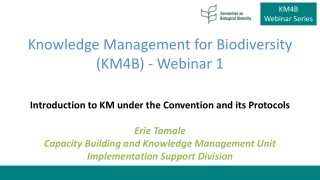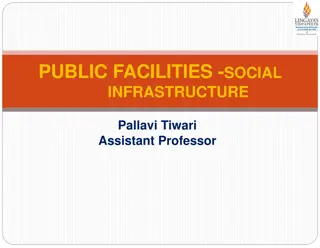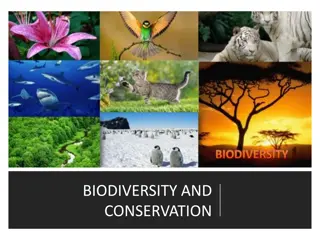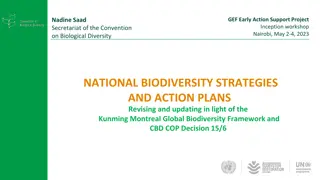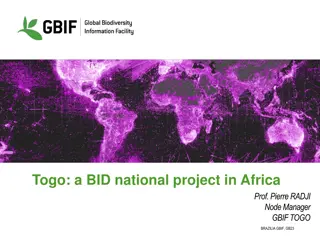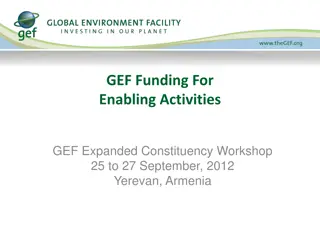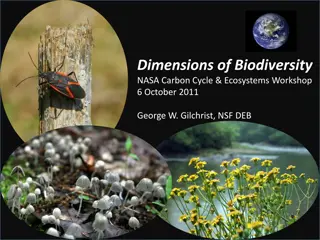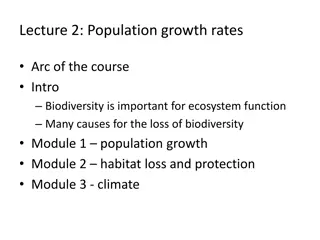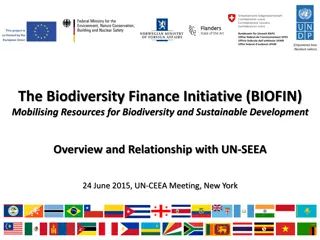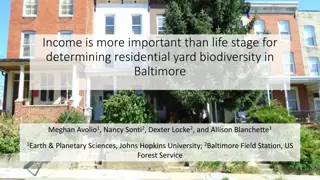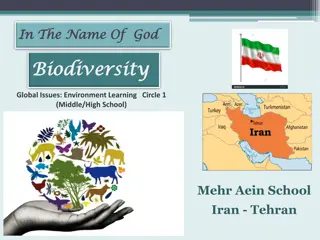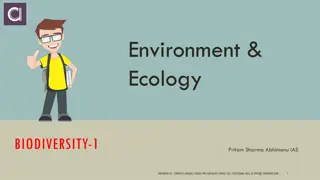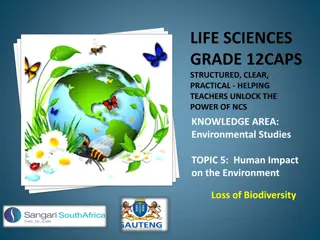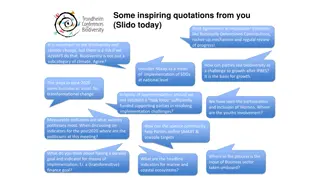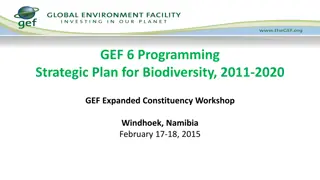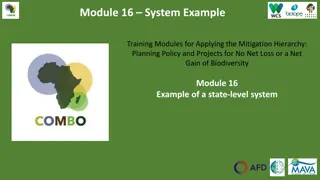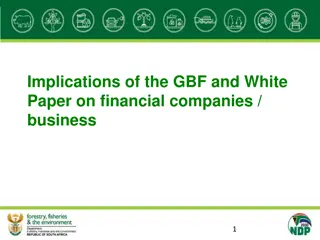Biodiversity in a Sugarbush and Beyond
Located in Rupert, VT, Merck Forest and Farmland Center is a non-profit organization established in 1950 with a mission to teach sustainable management of forest and farmland. The center spans 3,162 acres with educational programs, a certified organic sugarbush, and emphasis on biodiversity. Learn about ecosystem, species, and genetic diversity contributing to sustainability and resilience. Discover how biodiversity is crucial for resources, resilience, recreation, and research. Explore the importance of maintaining a diverse ecosystem for organic maple syrup production and the ecological management practices for sustained forest health and productivity.
Download Presentation

Please find below an Image/Link to download the presentation.
The content on the website is provided AS IS for your information and personal use only. It may not be sold, licensed, or shared on other websites without obtaining consent from the author.If you encounter any issues during the download, it is possible that the publisher has removed the file from their server.
You are allowed to download the files provided on this website for personal or commercial use, subject to the condition that they are used lawfully. All files are the property of their respective owners.
The content on the website is provided AS IS for your information and personal use only. It may not be sold, licensed, or shared on other websites without obtaining consent from the author.
E N D
Presentation Transcript
Merck Forest and Farmland Center Presents Exploring Biodiversity in a Sugarbush and Beyond FBEN Gathering November 5, 2016
Who are We? Located Rupert, VT (southwestern VT) 501(c)(3) Non-profit corporation established in 1950 Mission Statement To teach and demonstrate the benefits of innovative, sustainable management of forest and farmland.
On the Ground at Merck Forest 3,162 Total Acres 62 Acres in Farming 3,100 Acres in Forest Educational Programming Merck Forest and Farmland Center / Next Generation Science Standards School Partnership Program for Grades 5 & 6 Certified Organic Sugarbush 40 Acres 3,000 Taps 1,490 Gallons of Syrup Produced in the 2016 Season VT Organic Farmers, LLC. Organic Certification Program
What Creates Biodiversity? Ecosystem Diversity Species Diversity Genetic Diversity All three intertwine to create a safety net, or web of life, that protects the ecosystem from collapse.
Why is Biodiversity Important? RESOURCES RESILIENCE RECREATION & RESEARCH
Biodiversity in the Sugarbush Ideally, organic maple sap production should come from a diverse ecosystem and not from a pure maple monoculture. VOF Organic Maple Syrup and Sap Production Guidelines creation of a pure maple monoculture is not desirable North American Maple Syrup Producers it is important to include a component of other high-value hardwoods to add diversity to your woods. The Sugar Maker s Companion
Ecological Management for Sustained Maple Forest Health and Productivity through the University of Vermont, Entomology Research Lab Dr. Bruce L. Parker, Dr. Margaret Skinner, and Donald Tobi Completed in Spring 2013 In collaboration with NYS Department of Conservation NH Division of Forests and Lands
The Research 9 sites tested, in VT, NY, & NH Merck Forest was one of the sites for test plots. At each site: 2 sugaring operations within 20 km of each other 1 Traditionally managed, 1 Ecologically managed. Sites Assessed for: Pear Thrips Maple Leaf Cutters Sugar Maple Borers Maple Trumpet Skeletonizers Maple Anthracnose Eutypella Canker
Sugar Maple Other tree species Traditionally Managed Sugarbush Sugar Maples w/ large crowns, sweeter syrup / tree. 90 100% Sugar Maples More vulnerable to pests & diseases that impact tree health & sustainability.
Ecologically Managed Sugarbush < 75% Sugar Maples Less defoliation Fewer pest insects Less incident of diseases Healthier trees that live longer Benefits to wildlife enhanced May be more resistant to climate change in the future Sugar Maple Other tree species
Next Generation Science Standard Addressed for Grade 5 5-LS2-1. Develop a model to describe the movement of matter among plants, animals, decomposers, and the environment. LS2.A: Interdependent Relationships in Ecosystems A healthy ecosystem is one in which multiple species of different types are each able to meet their needs in a relatively stable web of life. Newly introduced species can damage the balance of an ecosystem. (5-LS2-1)
The Lucky Charms Analogy Brought to Life Just as we are attracted to a bowl of Lucky Charms with all marshmallows, forest pests, such as the forest tent caterpillar, are more attracted to forest stands with only sugar maples. ~ Ethan Crumley, MFFC Forester Bags of Lucky Charms (cereal & marshmallows) represent a diverse sugarbush, with a variety of tree species. Bags of Marshmallows represent a sugar maple monoculture.
The Gobi Game From the University of Toledo s GK-12 Program Based on the Great Lakes ecosystem. Shows how native species can interact and maintain an balance in the ecosystem. Introduction of an invasive species shows how a biodiverse system can begin to collapse. Game can be modified using animals from your own locale
Set Up! Spread out the felt this is the playing surface. Scatter the pom-poms on the felt. Distribute 1 cup, 1 fish card, assigned tool, and 3 bingo chips to each player. Chips go into the cups. Set aside the Goby card until the second set of rounds. Place remaining chips into the remaining cup to draw from.
Rules of the Game! 2 sets of rounds: one with all natives, one introducing an invasive. 30 seconds per round 4-5 rounds per set Use one hand with your assigned tool. Scoop one pom-pom at a time. Pom-poms go into your cup. Start with 3 lives at the beginning of the two sets. Scoring: 5 pompoms = Survival! You stay in the game. 8 pompoms = Survival & Reproduction! You gain 1 chip. 11 pompoms = Survival & Reproduction! You gain 2 chips. (For each 3 pompoms beyond 5, you gain 1 chip.)
Questions? Comments?
